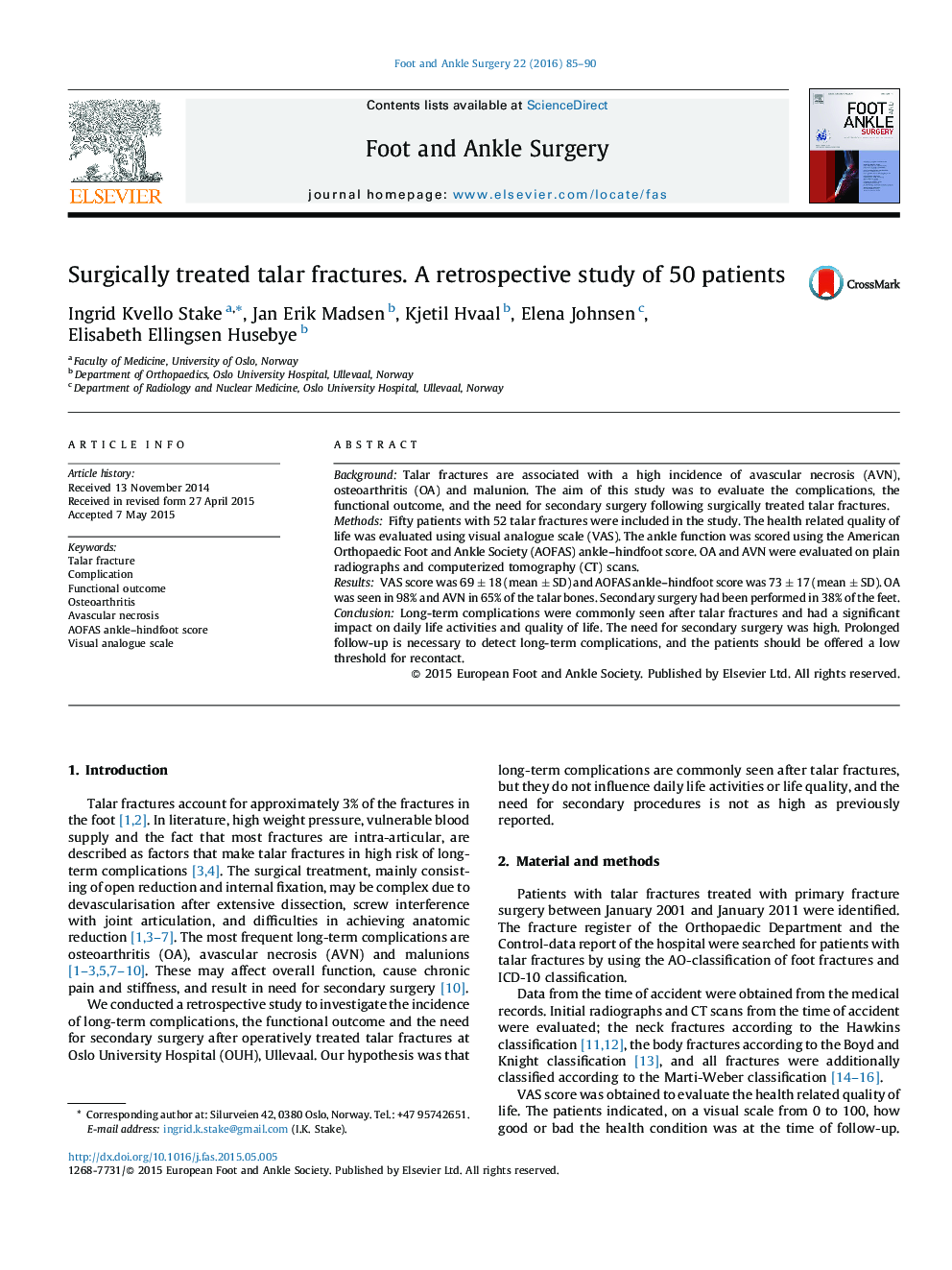| Article ID | Journal | Published Year | Pages | File Type |
|---|---|---|---|---|
| 4054400 | Foot and Ankle Surgery | 2016 | 6 Pages |
•Long-term complications were commonly seen after talar fractures.•Long-term complications influenced daily life activities and quality of life.•The need for further surgery was as high as previously reported.
BackgroundTalar fractures are associated with a high incidence of avascular necrosis (AVN), osteoarthritis (OA) and malunion. The aim of this study was to evaluate the complications, the functional outcome, and the need for secondary surgery following surgically treated talar fractures.MethodsFifty patients with 52 talar fractures were included in the study. The health related quality of life was evaluated using visual analogue scale (VAS). The ankle function was scored using the American Orthopaedic Foot and Ankle Society (AOFAS) ankle–hindfoot score. OA and AVN were evaluated on plain radiographs and computerized tomography (CT) scans.ResultsVAS score was 69 ± 18 (mean ± SD) and AOFAS ankle–hindfoot score was 73 ± 17 (mean ± SD). OA was seen in 98% and AVN in 65% of the talar bones. Secondary surgery had been performed in 38% of the feet.ConclusionLong-term complications were commonly seen after talar fractures and had a significant impact on daily life activities and quality of life. The need for secondary surgery was high. Prolonged follow-up is necessary to detect long-term complications, and the patients should be offered a low threshold for recontact.
